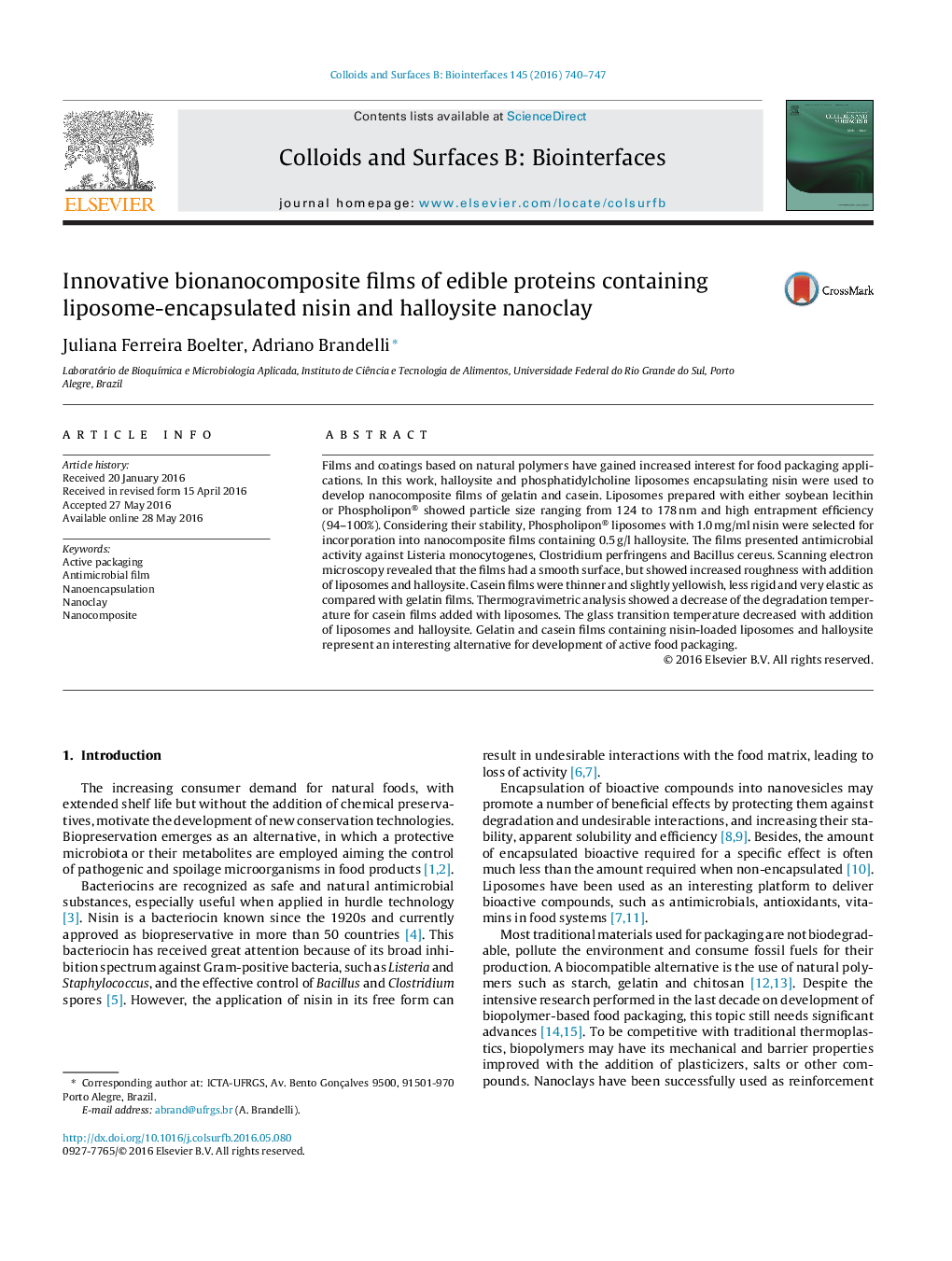| Article ID | Journal | Published Year | Pages | File Type |
|---|---|---|---|---|
| 599000 | Colloids and Surfaces B: Biointerfaces | 2016 | 8 Pages |
•Gelatin and casein films containing halloysite and liposome-encapsulated nisin showed antimicrobial activity.•Nanocomposite films inhibited L. monocytogenes, S. aureus and C. perfringens.•Mechanical resistance and thermal degradation of the films were not altered by inclusion of liposomes and halloysite.•These novel bionanocomposites are promising for active food packaging application.
Films and coatings based on natural polymers have gained increased interest for food packaging applications. In this work, halloysite and phosphatidylcholine liposomes encapsulating nisin were used to develop nanocomposite films of gelatin and casein. Liposomes prepared with either soybean lecithin or Phospholipon® showed particle size ranging from 124 to 178 nm and high entrapment efficiency (94–100%). Considering their stability, Phospholipon® liposomes with 1.0 mg/ml nisin were selected for incorporation into nanocomposite films containing 0.5 g/l halloysite. The films presented antimicrobial activity against Listeria monocytogenes, Clostridium perfringens and Bacillus cereus. Scanning electron microscopy revealed that the films had a smooth surface, but showed increased roughness with addition of liposomes and halloysite. Casein films were thinner and slightly yellowish, less rigid and very elastic as compared with gelatin films. Thermogravimetric analysis showed a decrease of the degradation temperature for casein films added with liposomes. The glass transition temperature decreased with addition of liposomes and halloysite. Gelatin and casein films containing nisin-loaded liposomes and halloysite represent an interesting alternative for development of active food packaging.
Graphical abstractFigure optionsDownload full-size imageDownload as PowerPoint slide
